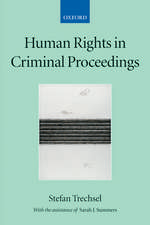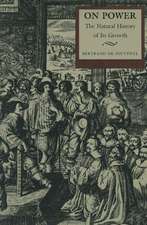Challenges to American National Security in the 1990s: Issues in International Security
Editat de M. Nacht, A. Nichols, G.H. Quester, J.J. Weltmanen Limba Engleză Paperback – 4 mai 2012
Preț: 386.81 lei
Nou
Puncte Express: 580
Preț estimativ în valută:
74.02€ • 76.84$ • 61.72£
74.02€ • 76.84$ • 61.72£
Carte tipărită la comandă
Livrare economică 22 martie-05 aprilie
Preluare comenzi: 021 569.72.76
Specificații
ISBN-13: 9781468490008
ISBN-10: 1468490001
Pagini: 288
Ilustrații: XX, 286 p.
Dimensiuni: 152 x 229 x 15 mm
Greutate: 0.39 kg
Ediția:Softcover reprint of the original 1st ed. 1991
Editura: Springer Us
Colecția Springer
Seria Issues in International Security
Locul publicării:New York, NY, United States
ISBN-10: 1468490001
Pagini: 288
Ilustrații: XX, 286 p.
Dimensiuni: 152 x 229 x 15 mm
Greutate: 0.39 kg
Ediția:Softcover reprint of the original 1st ed. 1991
Editura: Springer Us
Colecția Springer
Seria Issues in International Security
Locul publicării:New York, NY, United States
Public țintă
ResearchCuprins
1. The Setting for American National Security in the 1990s.- Breaking with the Past.- The Soviet Union Retrenches.- European Implications.- East Asian Implications.- Third World Implications.- A World of Greater Complexity.- A Changing International System.- Changes in American Foreign Policy.- 2. Some Considerations on the Soviet-American Relationship in the 1990s.- 3. The New Thinking and Its Limits: Soviet Foreign Policy under Gorbachev.- The New Thinking.- China and the Soviet Union.- The Third World and the Soviet Union.- The United States and the Soviet Union.- Conclusions.- 4. Arms Control and the Future of Nuclear Weapons.- The Arms-Control Context.- Strategic Nuclear Arms Negotiations.- Strategic Defense and Space Arms Control.- Theater Nuclear Arms Negotiations.- Future Nuclear Force Reductions.- Conclusions.- 5. Strategic Nuclear Weapons after START.- Strategic Consequences.- Discussion.- 6. Strategic Arms Control and American Security: Not What the Strategists Had in Mind.- What Is Arms Control All About and Who Says So?.- Personalities, Domestic Politics, and the Sense of History.- 7. Beyond German Unification: The West’s Strategic and Arms-Control Policies.- Conventional Forces in Europe.- Nuclear Weapons in Europe.- Conclusions.- The Future of NATO.- The Strategic Purposes of Conventional Forces.- The Role of American Troops.- Conventional Arms Control.- U.S. Nuclear Weapons in Europe.- Reconstructing the Foundations of Peace.- 8. American Security Policy in the Pacific Rim.- The Elements of the Strategic Situation in East Asia.- Issues for American Policy.- Conclusions.- 9. Why the Third World Matters.- Third World Threats to American Interests.- A Truly Realistic Approach to the Third World.- 10. New Weapons and Old Enmities: Proliferation, RegionalConflict, and Implications for U.S. Strategy in the 1990s.- The Proliferation of Advanced Weaponry.- Advanced Weaponry, Regional Conflict, and Global Spillovers.- A Proliferation Containment Strategy.- Containing the Proliferation Threat.- 11. Military and Civilians Uses of Space: Lingering and New Debates.- Lingering Debates from the 1980s.- New Debates for the 1990s.- Open Skies: The Policy issues and Debates.- The Role of the Media.- Multilateral Verification of Peacekeeping Operations.- 12. Security and Technology.- America’s Changing Position in the Global Econonny.- From Spin-Off to Spin-On Technology.- Will American Industrial Decline Reshape the Security Structure?.- 13. Predicting the Future of American Commitments.- Why Americans Care.- Ethnic Considerations.- Changes in Precedent.- Economic Changes.- The Proliferation of Weapons.- Nuclear Proliferation.- Chemical and Biological Warfare Proliferation.- Delivery System Proliferation.- Naval Deployments.- About the Authors.

















